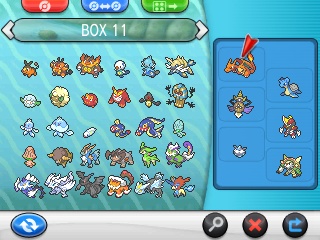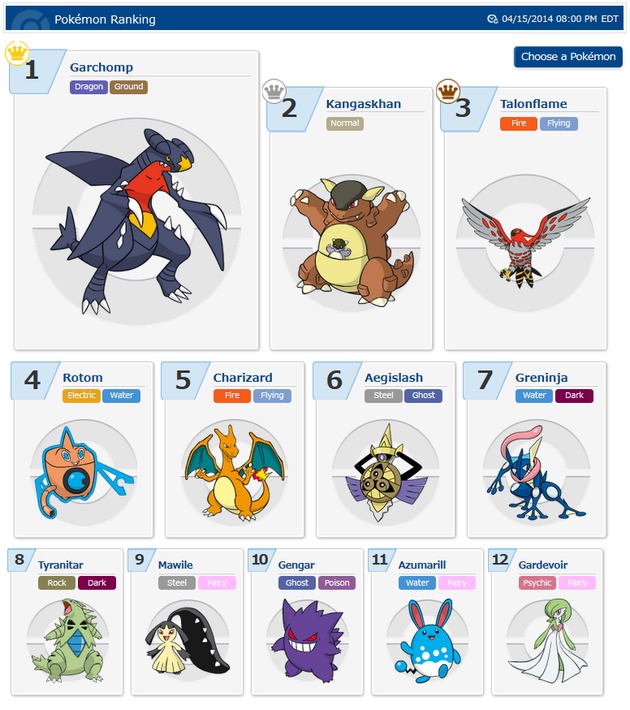


"Strong Pokémon. Weak Pokémon. That is only the selfish perception of people. Truly skilled trainers should try to win with their favourites."
In the past few months, we have dealt with the core mechanics of Pokémon, from EV training to IV breeding, and now comes the most unique part of Pokémon, the building of the team. Especially ahead of the Video Game Championship events coming up in May and beyond.
This sort of thing is one of the most subjective things about Pokémon as there is such variety with not only Pokémon species, but with how to use each individual Pokémon in the various battles.
I'm not going to tell you what Pokémon to use, as that would result in people having the same team and that's not fun at all. I will, however, be giving you the details to help you make a decision on how to start building a team. It's not going to go crazily into every intricate detail of competitive team building, but it's going to give you a decent start.

Rules
To start with, we'll deal with the rules that are part of the game. While many online communities set their own rules, restricting Pokémon to specific tiers, the actual game only has a small amount of rules for you to select when starting with a battle.
First, let's just do a quick rundown of the types of battle. First are Single Battles, where you use 1 Pokémon at a time, then Doubles where you use 2 at a time, Triples where you use 3 at a time, and Rotation where you send out 3 at once, but only use one, rotating between the three as you see fit in the turn.
Into the rules, there are three official rulesets accessible by yourself in the game. First are No Restrictions, which means that you can use any Pokémon you want, at any level, with no restrictions to items or repeating the Pokémon.
Next is the Normal Battle Mode. This mode is like No Restrictions, but it makes all of your Pokémon Level 50 as standard rather than having the levels range. This is a good mode for battles as it puts all Pokémon on a level playing field despite how far advance they are.
Finally are Flat Rules. These Rules are the ones you see in Random Matchup, Battle Maison and various online competitions. They are a bit complex, so this table will help illustrate it:

There are also variations to the above rules that you will see from time to time. For example, Japan once had a competition where you could only use Eevee Evolutions, another that was Kanto Dex only.
The upcoming Video Game Championships use a modified variation of the Double Battle Flat Rules, including clauses that mean you can only use Pokémon that were caught or hatched in Pokémon X & Y and Pokémon only in the three Kalos Regional Pokédexes. This means you can certainly experience variety within these games.
Choosing Pokémon & Moves

This is where things get complicated. There are 719 confirmed Pokémon available in the game, several with countless forms and 28 with available Mega Evolutions which means possibilities are endless.
So, what Pokémon should you use? That's totally up to you. Obviously, if you're going to go for competitive battling, you won't be using ones such as Sunkern, which narrows the range down somewhat.
The best thing to do is first to choose one Pokémon you wish to use. Typically, this means you can build a team around that, filling in gaps where they may exist. However, you need to consider more than just species. If you're using a Pokémon like Tyranitar, it's likely to have its ability of Sand Stream which creates a Sandstorm which damages all Pokémon that aren't Ground, Rock or Steel-types. As such, putting in a Pokémon such as Shedinja would be suicide as you'd end up killing it.
If you're in Doubles & Triples, you need to think strategically as well. If you're going to use Earthquake on a Pokémon, then you should team it with a Flying-type Pokémon or one with the ability Levitate so that they won't get hit by your own move.
As each Pokémon has got varied stats, you're going to want to give them a moveset that monopolises upon its strength. If you're using a Talonflame, for example, you're going to want to focus its moves on physical due to its high Attack stat being much larger than its Special Attack.
You'll also want to make sure the movepool is diverse. If you set up a Blastoise and give it only Water-type offensive moves, you're going to have a bad time. The key to Pokémon is to try and surprise people with moves that they may not expect.
Due to the variations in stats & movepools, many terms have been coined to describe various Pokémon. There's a rather large amount so I'm only going to cover the basics
Obviously, you're going to want to mix these roles into your team accordingly so that you're not just left with a team of sweepers. You need to think about getting decent coverage and preparing for what could easily take down your Pokémon.

Now, I imagine that, to the more casual player or one who is just starting to get into competitive, this is incredibly daunting. Thankfully, there are resources around the Internet that can help you. Sites like my own Serebii.net and Smogon provide various moveset recommendations for Pokémon, along with the best way to use them and who to partner with them, but the best resource has come to be the Pokémon Global Link.
With X & Y, the Global Link has added some amazing features. Under the Rating Battle section, you have the ability to check the stats for various Pokémon. This section compiles everything you could possibly imagine about all Pokémon that have been used in the Rating Battle mode for all battle types. It lists the top 10 moves, items, the top abilities for each Pokémon. It also lists what Pokémon are commonly used to partner with it and, even better, shows the most common Pokémon that are used to defeat it.
Such a feature is very handy for a budding trainer as you'll be able to easily see what works on a Pokémon and what doesn't, just by browsing the Global Link. Just remember, try to be imaginative. Many teams have had the best stuff and failed while the underdog with an awesome unseen strategy has prevailed.
Strategies that work well together are key. In Single Battles, switching is often used to try and get an advantage. In Doubles & Triples, the Pokémon should work well together such as the aforementioned Earthquake thoughts or strategies such as using your own moves to power up a team-mate.
You also need to think about how to use your opponent's team to your advantage. Like any team, they are going to have holes and weaknesses. Obviously, you can't plan for every single contingency, but using your strengths and your opponent's weaknesses on the fly is a very handy thing to do.
For example, check this battle video in your VS. Recorder to see how you can set up something to get your Pokémon to shine: DEQG-WWWW-WWW5-YWJ2. In this battle, I used an entry hazard to my advantage, and then monopolised on my opponent's ability while fully abusing my own Pokémon's ability. These sort of strategies are ones you need to think about rather than just going for force.
Think carefully and check the resources at your disposal, but most of all, try to be unique.
Testing the team

OK, so you've worked out a team, you've bred and trained it so you're ready to go. Though, so many ideas are great on paper, but may not work out in reality due to a variety of factors, so you'll want to test the team. While you can test your team against friends, that may not be the best way to go about it as they'd know you. Thankfully, there are other options.
Most notably, in Lumiose City is a Battle Institute building. Here, you can test your team using the standard Flat Rules against 5 different trainers of varying and increasing difficulty. These trainers start off easy, but become hard as nails. Once you have completed it, you will get ranked based on your performance. This takes the amount of Pokémon you have lost, amount of Super Effective hits you got, amount of times you were hit by non-effective moves etc. and gives you a point rating and ranking based on it. Of course you will want a high rating if your team has done well. Even if not, this isn't a waste of time as you will receive Battle Points! You can also test it in the Battle Maison and see how far you can get.

Another way of testing it is to go onto Free Battle & Rating Battles itself in the Battle Spot mode of the game. This will match you up with random trainers who follow the same rules. There are a few drawbacks to this, however. Free Battle is a fine mode, but has no restrictions so you may not get the true experience as you will undoubtedly face many legendary Pokémon while with Rating Battles, your score with wins and losses is recorded meaning that if you don't do well, it will affect your position in this season of the battles.
If you're happy after all the testing, then your team is good to go for competitions or to destroy your friends!




 Oracle of Seasons Walkthrough – Onox’s Castle –
Oracle of Seasons Walkthrough – Onox’s Castle –  Batman: Arkham Knight Guide
Batman: Arkham Knight Guide Guide: Tips And Tricks To Get You Started In Bayonetta 2
Guide: Tips And Tricks To Get You Started In Bayonetta 2 The Wind Waker Walkthrough – Dragon Roost Cavern –
The Wind Waker Walkthrough – Dragon Roost Cavern –  Guide: Getting Started and Collecting All Masks in The Legend of Zelda: Majoras Mask 3D
Guide: Getting Started and Collecting All Masks in The Legend of Zelda: Majoras Mask 3D